Buildings – Public Houses – Churches – Hospitals
Read about Blackpool’s History >>> here <<<
This category shows public buildings, public houses, churches and hospitals etc.
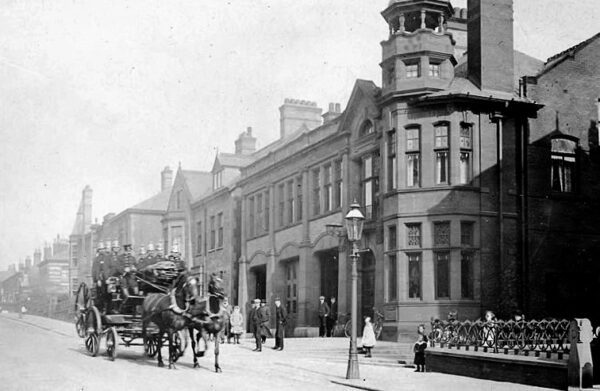
Blackpool Fire Station
This building in Albert Road replaced the 1878 station in the Corporation yard in Hull Street. The new station was opened in 1901 at a time when the Fire Brigade was controlled by the Chief Constable, firemen known as fire bobbies, separating in 1935. The station had 3 engine bays, with stables for the horses and accomodation for firemen at the rear and in Charnley Road. The site is now occupied by Council offices, but a small piece remains on the right corner.
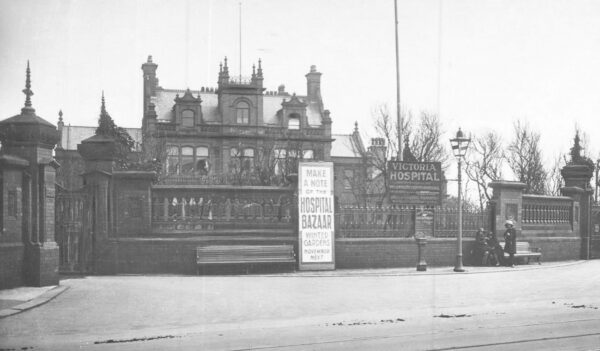
Victoria Hospital
The hospital named after Queen Victoria was established in 1894 and is seen here in the original location on Whitegate Lan (Drive), where the Health Centre is now. The hospital was supported by voluntary contributions. It contained four rooms used as wards and held twelve beds and three cots. There were also apartments for the matron and staff, an operating theatre, dispensary, kitchen, laundry and other minor rooms.
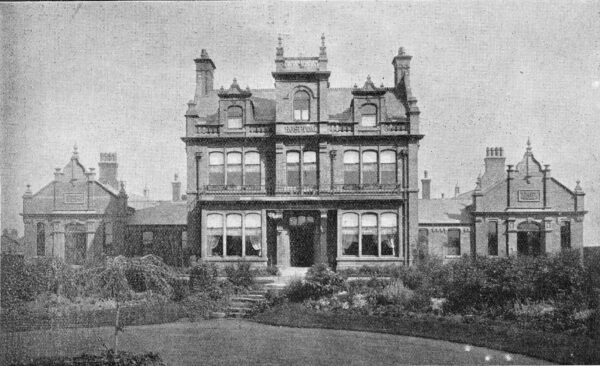
The hospital as seen in 1899
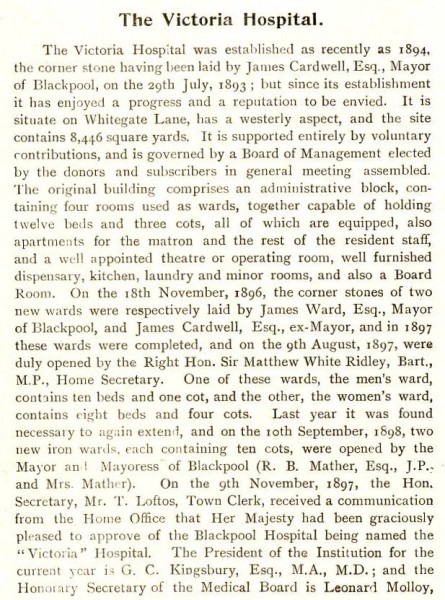

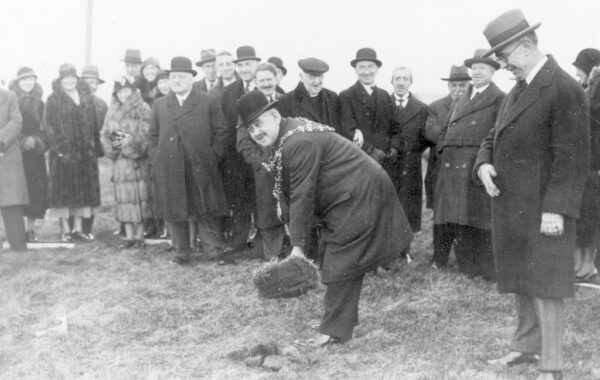
The hospital was subsequently moved to East Park Drive. The foundation stone of the new building was laid by Lord Derby on 9th June 1933.
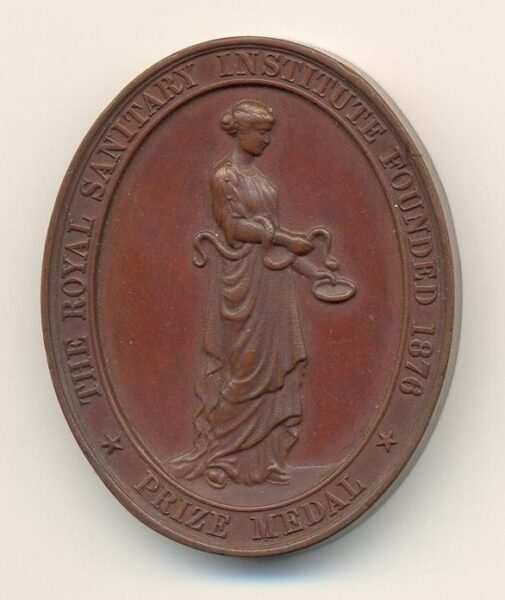
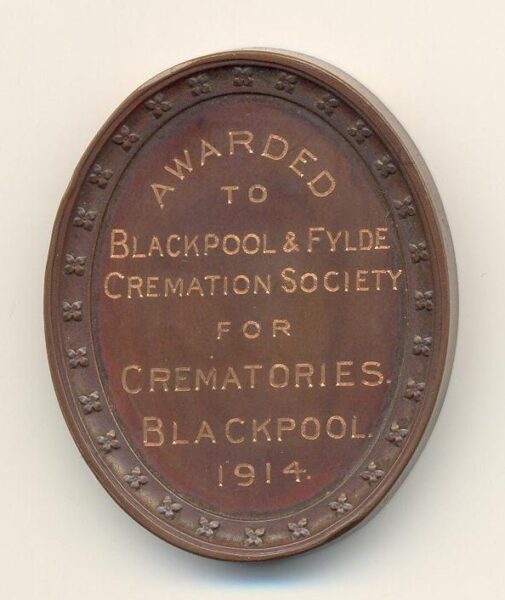
Rare local prize medallion
Awarded to Blackpool & Fylde Crematorium Society for cemetories – Blackpool 1914
The Royal Sanitary Institute Founded in 1876
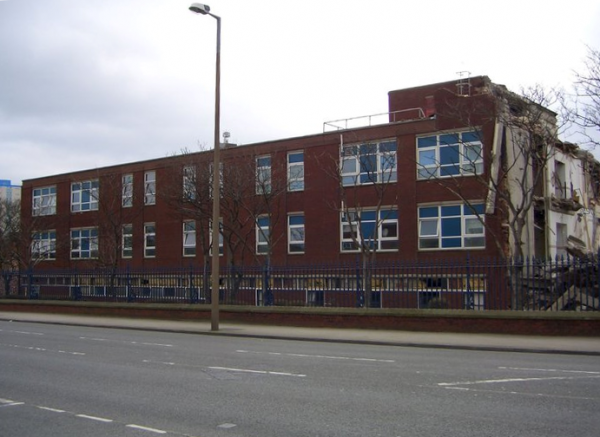
Demolition of the hospital on Devonshire Road during 2007
Blackpool Isolation Hospital was opened on Devonshire Road on the 7th of July 1891. Later called Blackpool Sanatorium, it was Devonshire Road Infectious Diseases Hospital until 1954
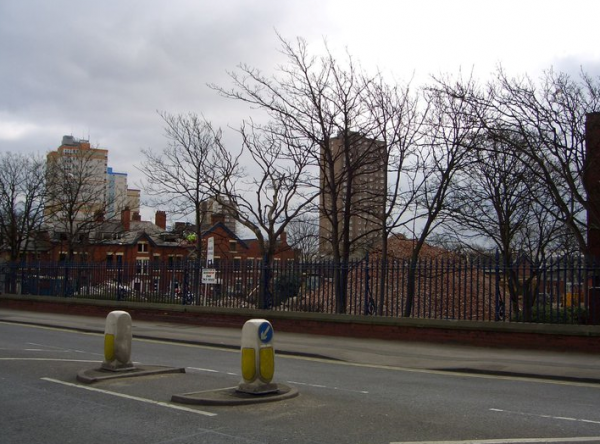
Same area – Late 2007
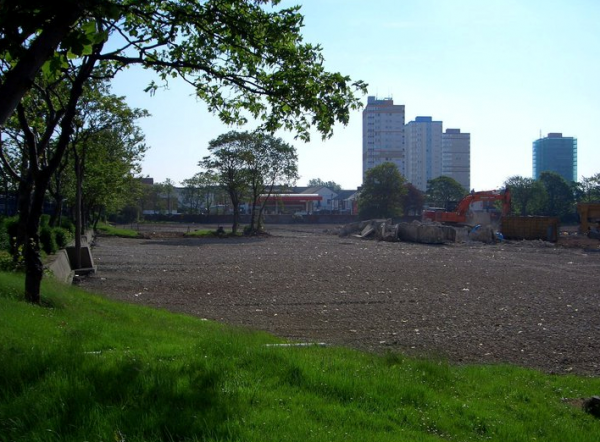
Area nearly cleared of all the rubble.
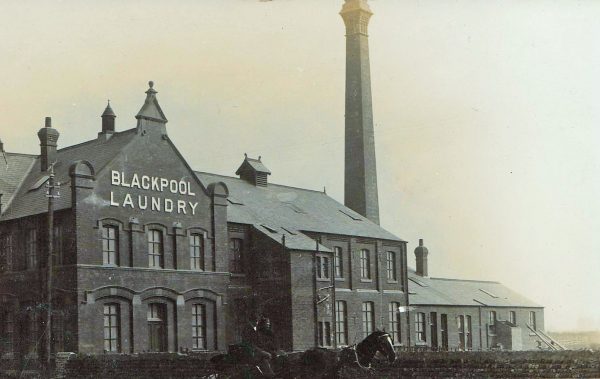
Blackpool Laundry on the south side of New Road between Devonshire Road and Layton.
Layton Salerooms was on the site, now a charity shop.
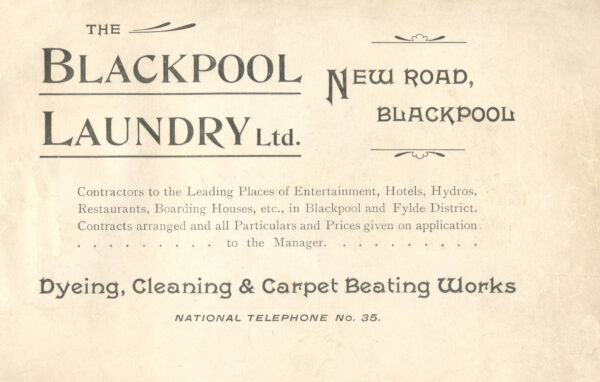
Brochure for services being offered
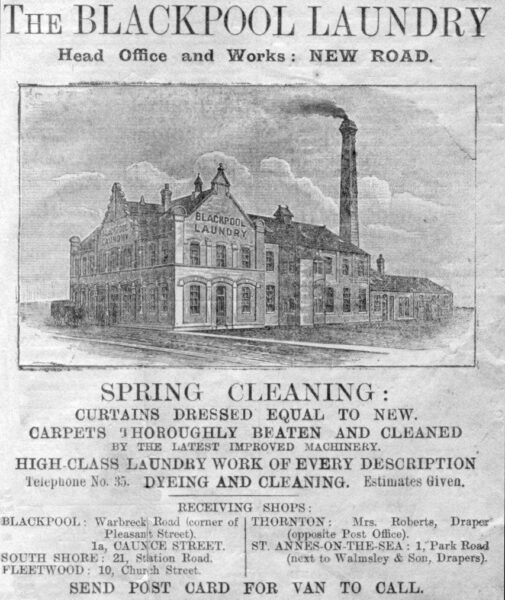
From the Blackpool Herald and Fylde Advertiser – 1903
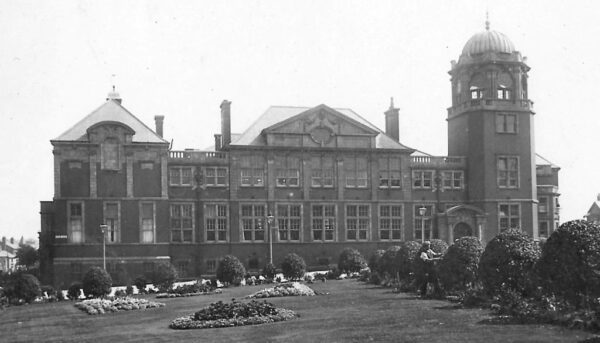
Secondary School, Raikes Parade. Now the Salvation Army Citadel.
Grade 2 Listed Building
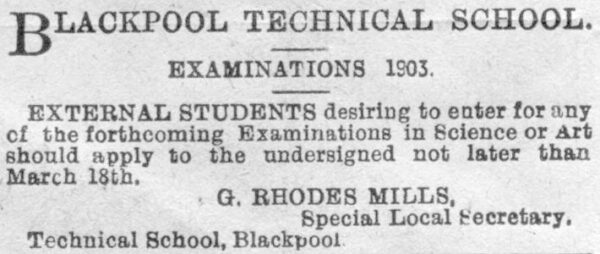
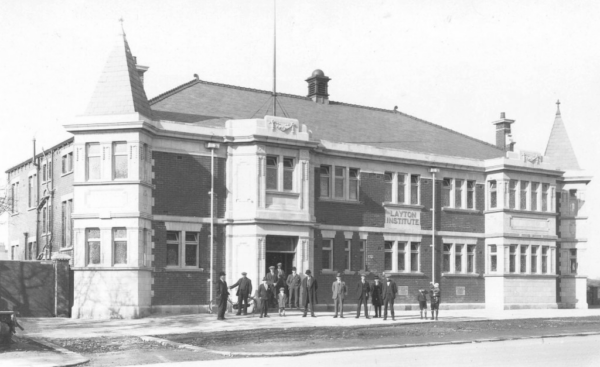
The first Layton Institute was opened on 8th November 1912. The original venue was a barn at Little Layton, but moved to a bungalow where the P&G Bargain Store is opposite the present site. The foundation stone was laid in June 1925
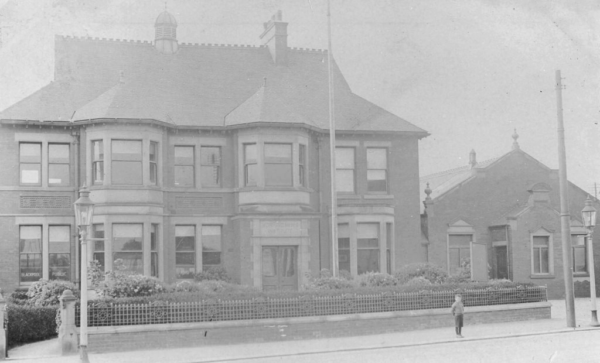
Marton Working Men’s Club and Institute was founded to give the people of the Marton district a place for ‘recreation and mental improvement’. The foundation stone was laid on 27th April 1895 by a 95 year old Mr J Parrot, whose £500 donation greatly aided the Committee’s work.
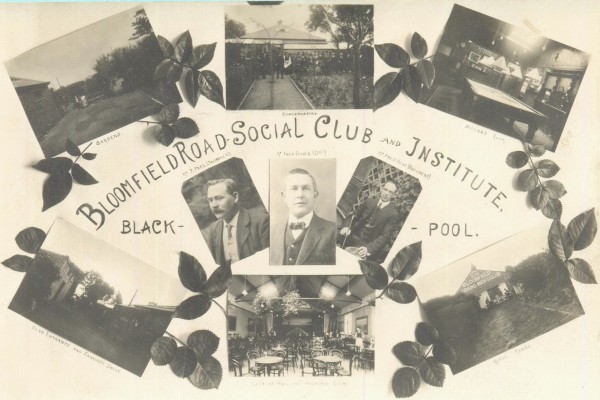
Bloomfield Road Social Club & Institute
Pictures, Mr J. Peel, Fred Oliver and Fred Heap
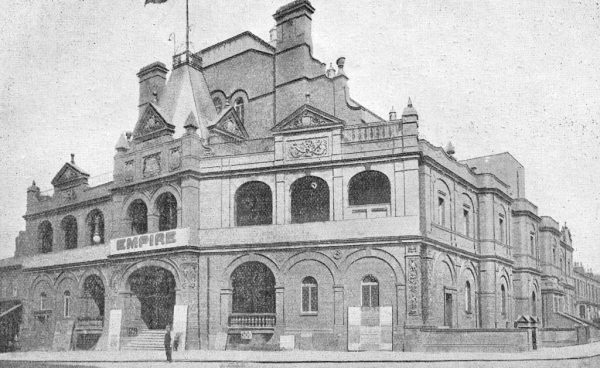
The Empire Theatre
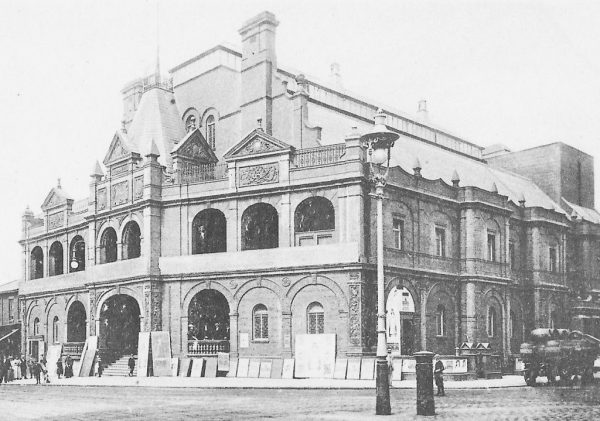
Hippodrome, Church Street. Demolished in 1962. Later the site of the ABC cinema.
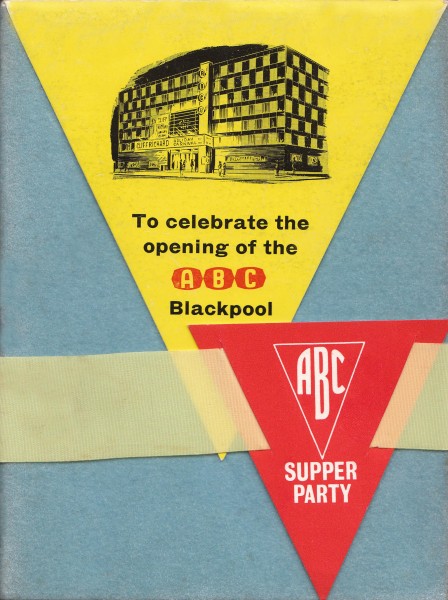
Official Menu for the opening of the ABC on 31st May 1963
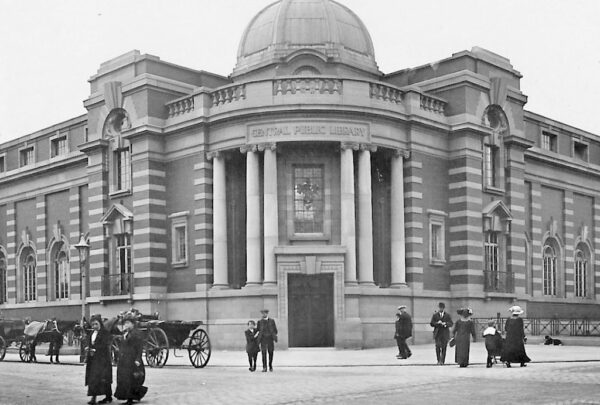
Central Public Library
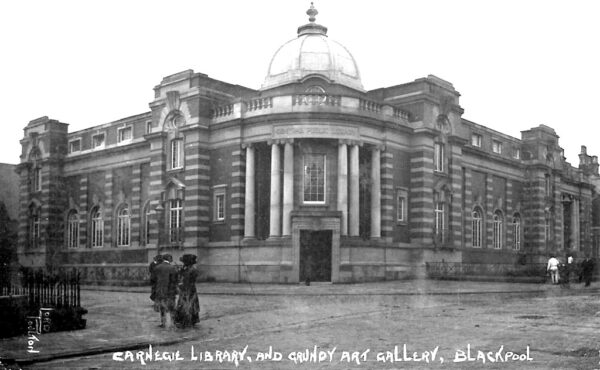
The Carnegie Free Library was opened on the 26th of October 1911, at the corner of Queen Street and May Bell Avenue, funded by Andrew Carnegie, a wealthy American businessman. Now a Grade 2 Listed Building.
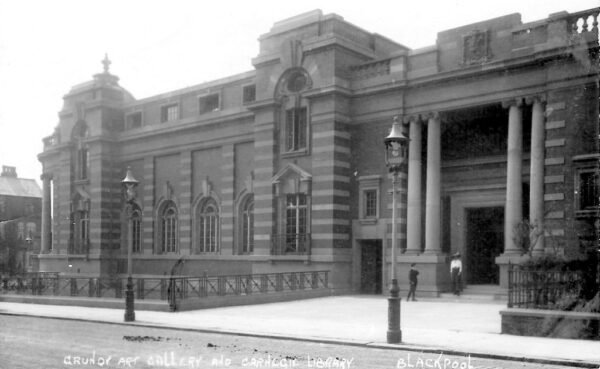
Grundy Art Gallery & Carnegie Library – 1924
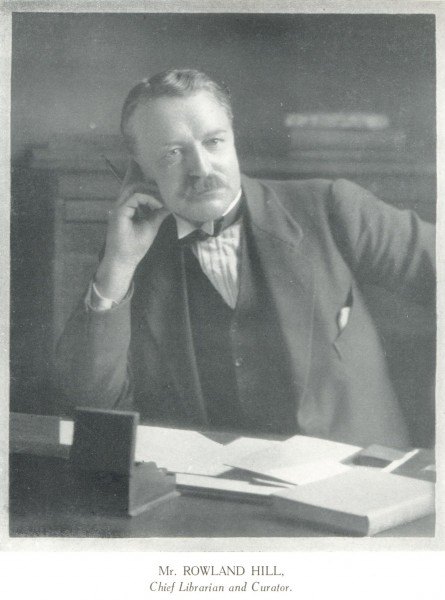
Rowland Hill
Chief Librarian & Curator – 1926
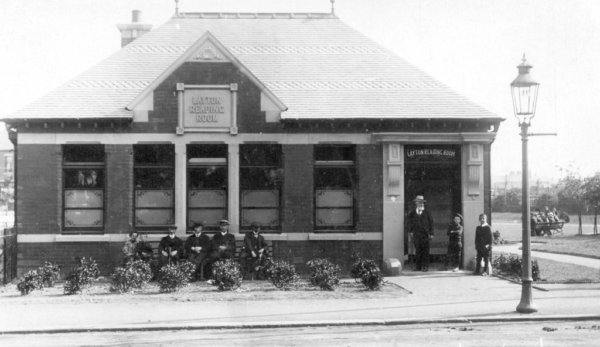
Layton Reading Room
Replaced by the Layton Branch Library in 1937
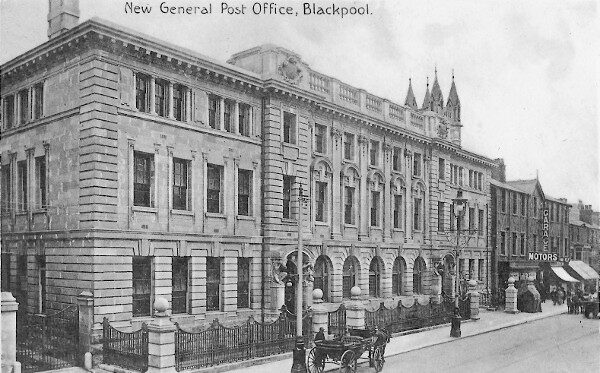
General Post Office, Abingdon Street
Opened on the 2nd of June 1905
Grade 2 Listed Building
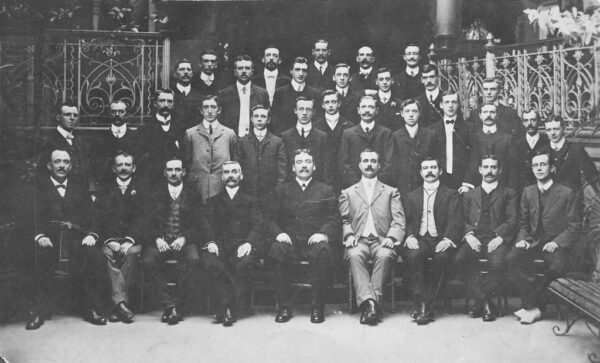
Blackpool Post Office Staff

Hemingway’s Manchester Hotel. A carte de visite by Leaver
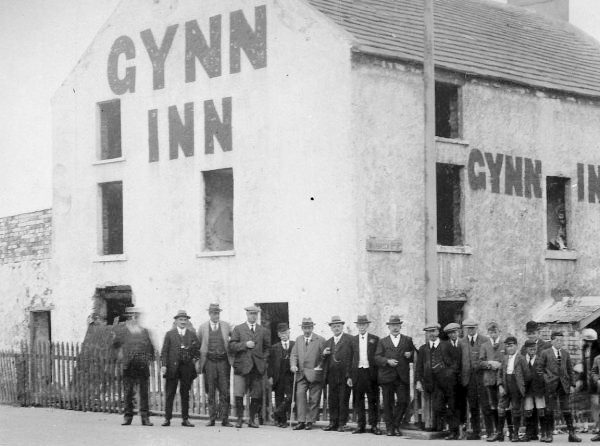
A superb picture by Charles Howell. The Gynn Inn finally closed its doors during May of 1921 and “Granny” Ashworth, the licensee for over twenty five years, moved to Uncle Tom’s Cabin which was then managed by her daughter, Mary Burnett. This view is dated August 1921 & probably the last Gynn Inn photo before demolition. From the photograph, it is clear the interior has already been gutted.
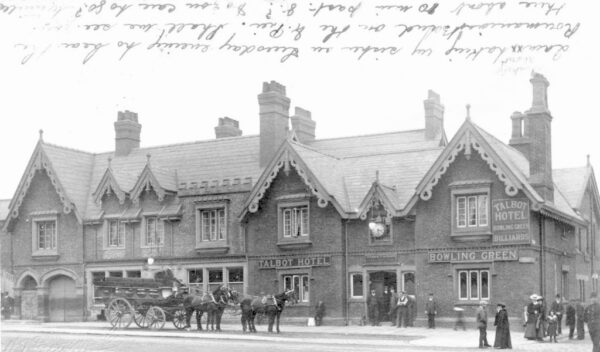
Talbot Hotel
Card postmarked July 30 1906. The hotel stood opposite North Station and was built by Thomas Clifton in 1845. It could stable 50 horses. The original building consisted only of the smaller part to the right and the larger wing on the left added during the late 19th century. From 1856 to 1921 the Talbot was owned by the Nickson family and later the C & S Breweries. Demolished in 1968. This card is now in our collection.
The Talbot Hotel was demolished in 1968. The Prudential House buildings, Ron Reddy’s butchers (established in 1969), the Salad Bowl greengrocer’s, a card shop, and an Iceland freezer store soon appeared on the site.
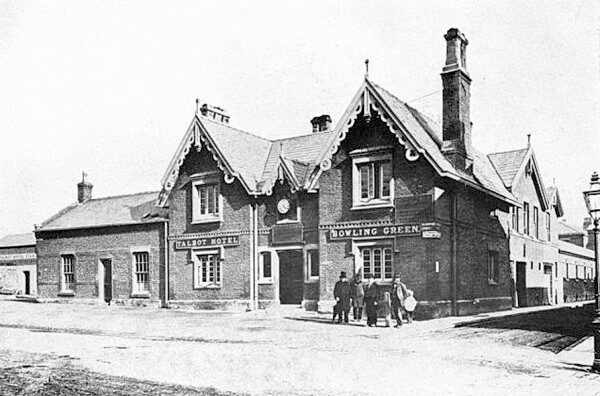
Talbot Hotel – 1880’s
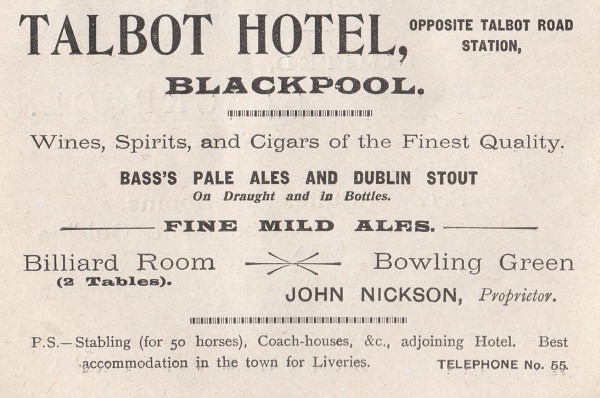
Advertisement from 1899
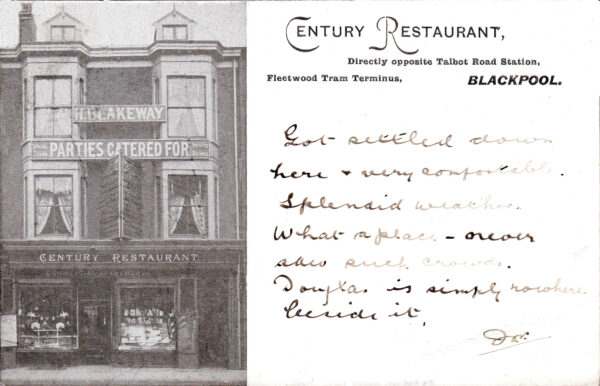
2 Dickson Road
Century Restaurant and Apartments – Henry Blakeway
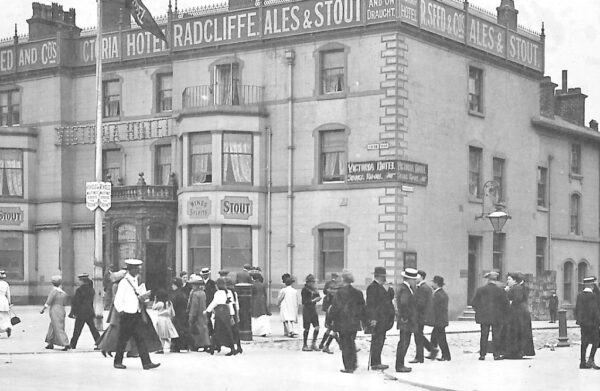
The Victoria Hotel
which was situated on the corner of the Promenade and Brunswick Street was built by John Bonny in 1841
The first landlord was James Cragg

Yates’s Wine Lodge
Was located in Talbot Square, formerly known as Belle Vue Square, and built on the site of Dr. Baker’s house. The building was opened in 1868 as the Arcade and Assembly Rooms. The premises contained a shopping arcade, billiard halls. a restaurant and a saloon equipped for theatrical productions & which became the Theatre Royal. Sleeping apartments were added in 1874.

Part of the building became the town’s first Free Library during 1880, opened by Lord Derby on the 18th June. Oscar Wilde appeared at the Theatre Royal in 1883 and motion pictures were shown in 1897. Peter Yates rented a part of the building in 1894 and bought the complex in 1896. Theatre Royal was later to become the Tivoli Cinema. After a huge fire due to arson, the building was demolished to leave a large vacant site.
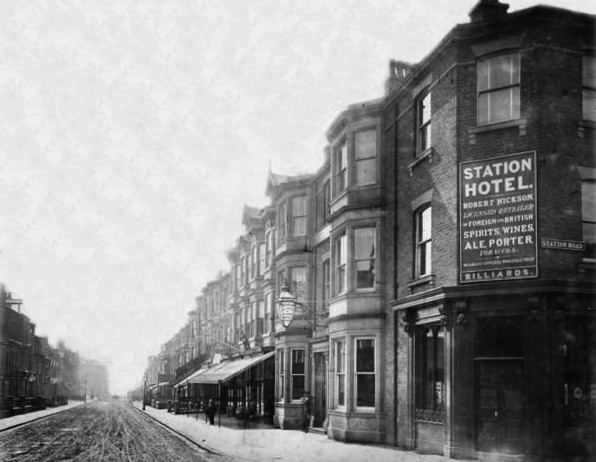
Station Hotel
Corner of Talbot Road and Station Road (Dickson Road)
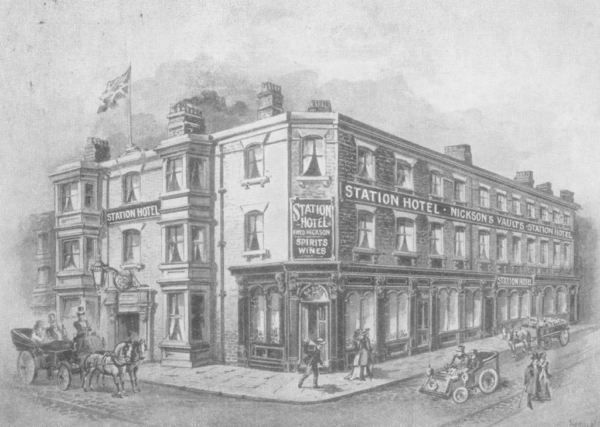
Station Hotel, corner of Talbot Road and Dickson Road, now ‘Ma Kelly’s’
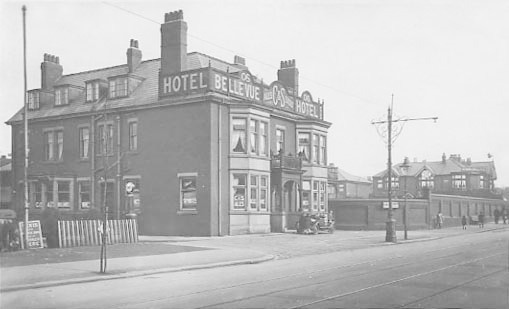
Belle Vue Hotel – Whitegate Drive
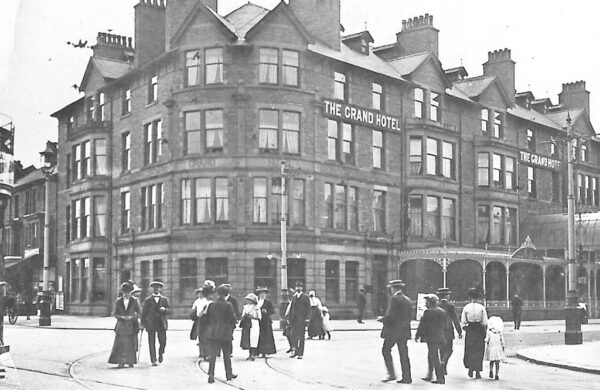
The Grand Hotel
Station Road and Lytham Road. Demolished after a large fire
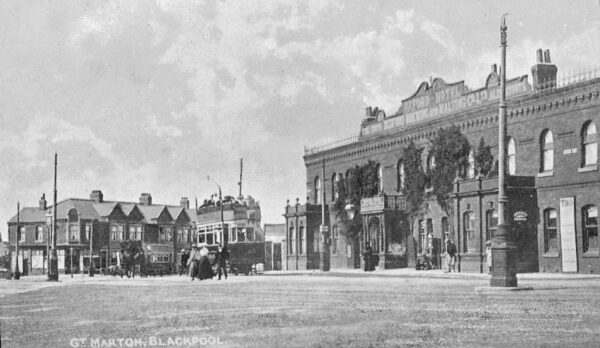
Seen here on a postcard dated 1908, The Oxford Hotel opposite Marton Institute
In 1876 The Oxford Hotel and Pleasure Gardens were built next to the Great Marton Mill on the site of the demolished Mill Inn. It was also known by some as the Half Way House. It had a bowling green and “splendid views of the surrounding countryside”
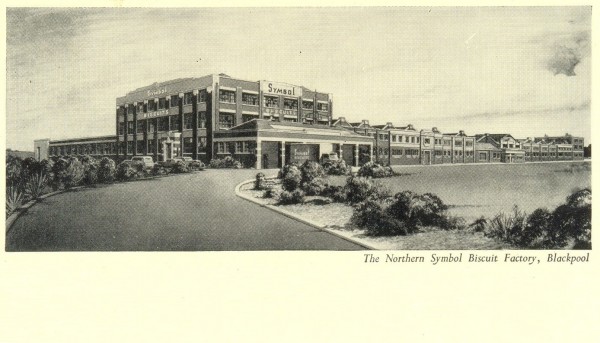
The Northern Symbol Biscuit Factory – Blackpool – 1954
The Blackpool Biscuit Company, by then called Bee-Bee Biscuits, moved to their new factory on Devonshire Road. In 1944, it became Symbol Biscuits, then in 1990, Lyons Biscuits, and in 1994 Horizon, and it is now part of Burton’s Foods
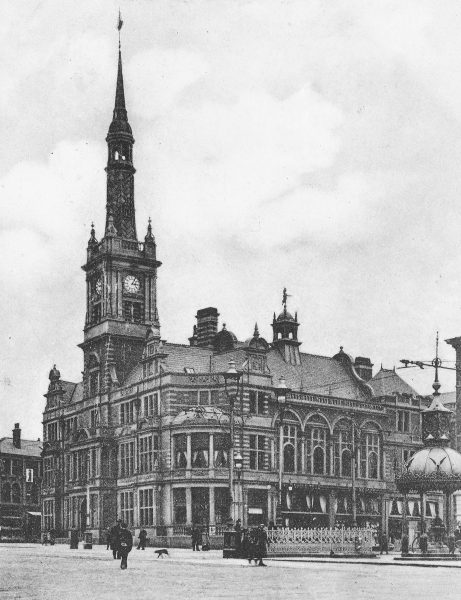
The Town Hall which was completed in 1900 at a cost of £81,500. It had a spire which rose to 180ft above the ground, made from steel and timber and clad with sheet copper. The spire was removed in 1966 on grounds of structural safety.
Now a Grade 2 Listed Building
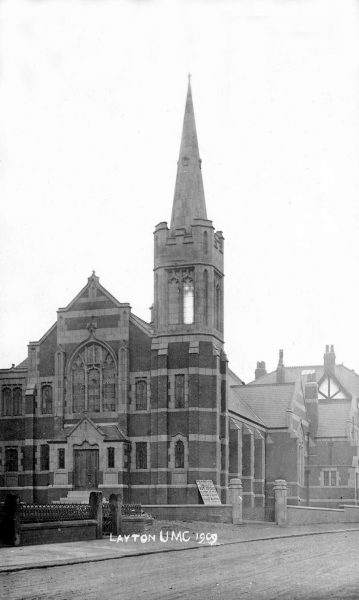
Layton UMC 1909
It stood on Newton Drive at the corner of Dutton Road, and across the road from St. Kentigern’s RC School. The three gate posts on the left and a gable end of the house on the right, are the same today
When the United Methodist Church closed, it was taken over as the Victoria Congregational Church (that had originally stood on Victoria Street opposite M&S), demolished for the Houndshill Shopping Centre
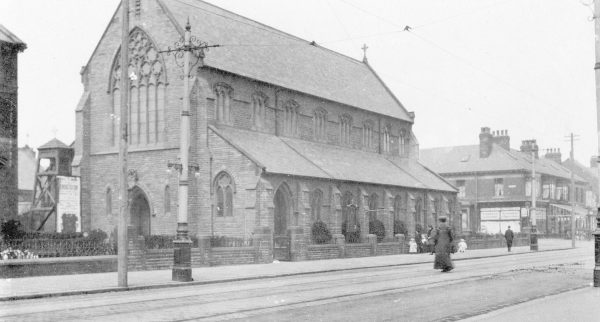
St. Cuthbert’s Catholic Church, Lytham Road, South Shore
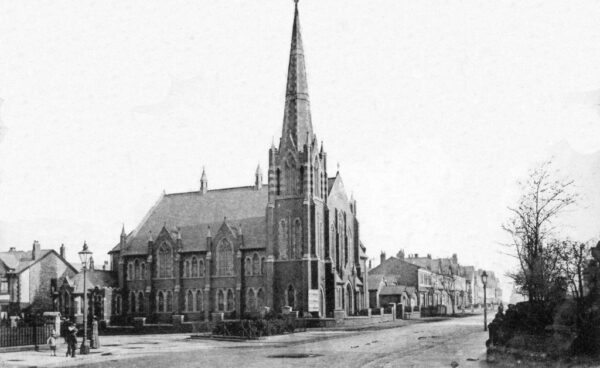
Raikes Parade Methodist Church
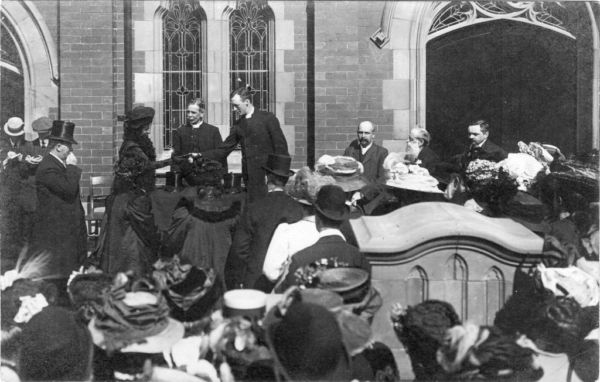
Opening ceremony Raikes Parade Methodist Church 7th June 1909
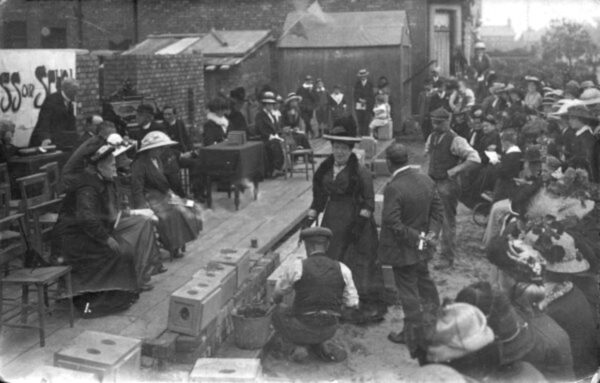
Raikes Parade Methodist Church on 17th September 1913
Stone laying of the Sunday school – Mrs. Wells laid the stone on behalf of “the ladies of the congregation”
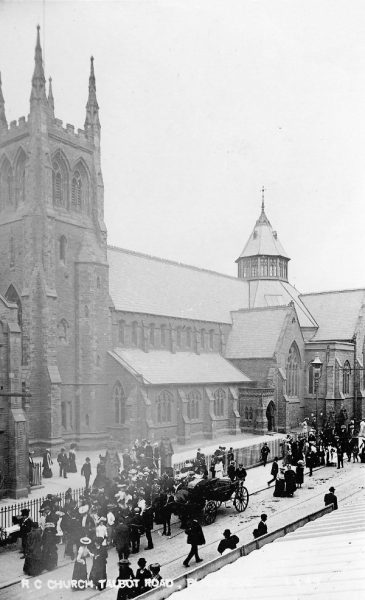
In 1857 the Church of the Sacred Heart, designed by E. W. Pugin, opened on Talbot Road as Blackpool’s first Roman Catholic church
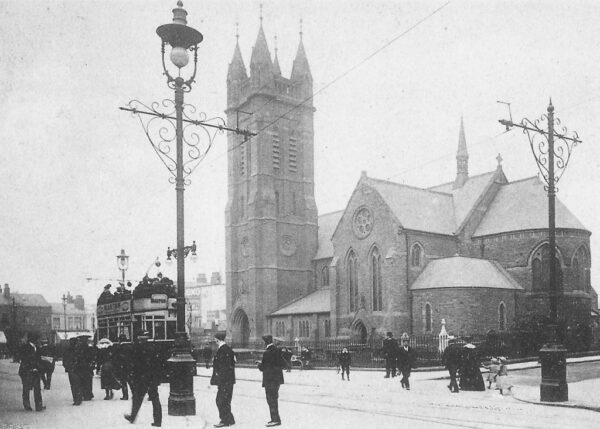
St. John’s church opposite the Winter Gardens
The original Saint John’s Church was constructed by the Bishop of Chester on 6th July 1821. The church was built between 1820 and 1824 at a cost of £ 1070 0s 5d, the monies being contributed by leading figures in the town and the public. As Blackpool grew, it was decided that a larger church was needed and in 1877 it was demolished, with the new church construction starting immediately.
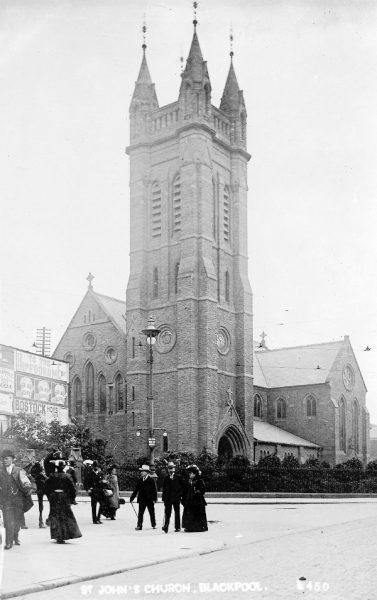
Saint John’s Parish Church. Originally built in 1821, and as Blackpool grew, demolished in 1877 to build a larger church. The railings surround the graveyard.
Grade 2 listed building
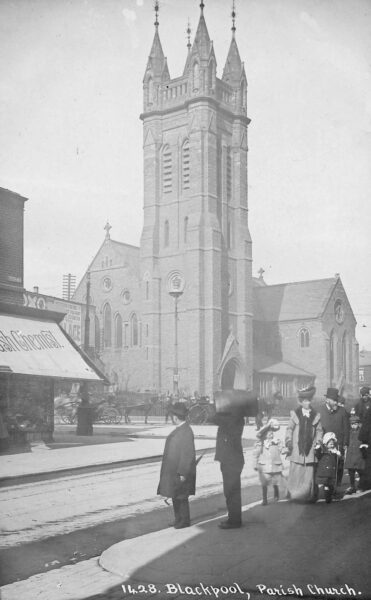
Another view of Saint John’s Parish Church
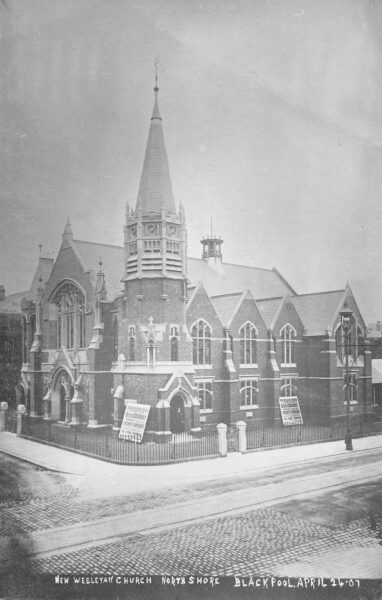
New Wesleyan Church, Dickson Road. 24 April 1907
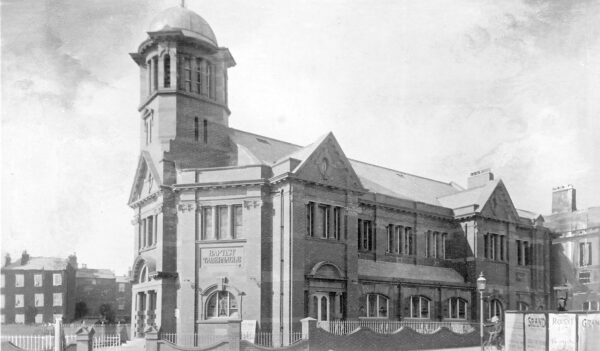
Baptist Tabernacle
Springfield Road. Opened on the 1st March 1906
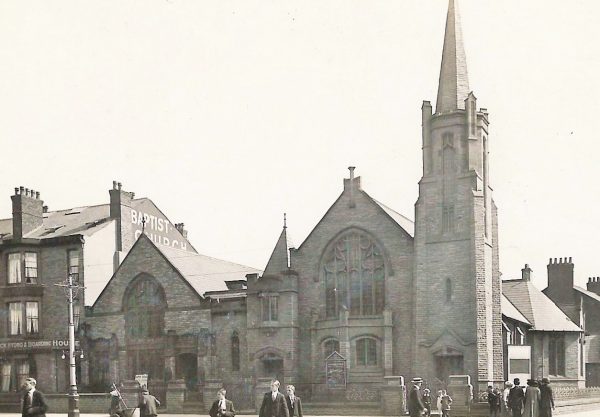 Baptist Church, South Shore. Station Road, joined with Whitegate Drive Baptist Church, after their building began to suffer from subsidence and had to be demolished in 1984 and is now a car park.
Baptist Church, South Shore. Station Road, joined with Whitegate Drive Baptist Church, after their building began to suffer from subsidence and had to be demolished in 1984 and is now a car park.
Station Road Baptist Church was opened in South Shore on the 12th of May 1910.
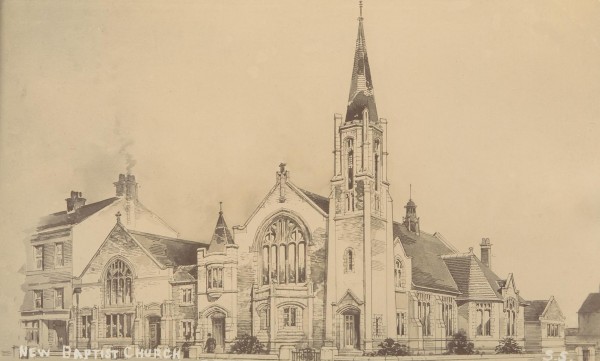
An interesting postcard showing a drawing of the New Baptist Church, dated 24th September 1909.
The sender writes, ‘This is a photo of our new chapel when finished, it looks alright. The foundation stone laying realized and brought the total up to £ 1.611 8s 0d. ‘
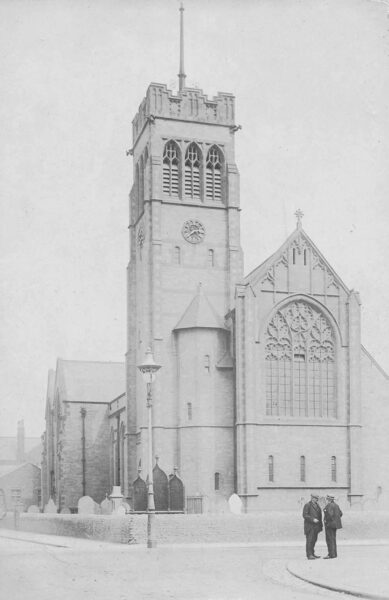
Holy Trinity, Church Street, South Shore

